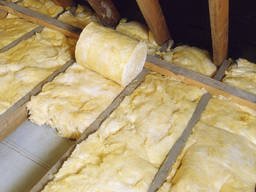Insulating Your Home

Insulation is essential to keep your home cool in summer and warm in winter. By installing insulation you will effectively keep your heating and cooling bills down and reduce greenhouse gas emissions. Sealing your home against draughts is also important and will help the insulation to perform more efficiently. Walls, windows, ceiling and floors can all be contributors to the loss of winter heat and the increase of summer heat.
The best way to insulate your home is during construction or renovation, however existing homes can easily be retrofitted with insulation. R Values are the rating systems for the performance of insulation. The higher the R Value the better the insulation. As always we suggest you research the many products, manufacturers and installers of insulation. Your local weather conditions and the home’s position to sun and shade, your roof type and your budget will help determine which product is the right one for you. You may also want to consider the most fire retardant product if you live in a bush fire prone area, a pest resistant product or an asthma & allergy friendly product.
There are many insulation products on the market with the two main types being bulk and reflective. The more common products for bulk insulation are rock wool, glass wool, cellulose fibre and polystyrene. Reflective insulation is aluminium foil laminated to paper or plastic in the form of batts or sheets known as sarking. This can also be applied as wall insulation for new builds and extensions. There are different insulation products available for roofs, ceilings, walls and floors. Underfloor insulation is a perfect addition for older homes with timber floors that have moved over many years and created small gaps that enable draughts to enter. It will also reduce noise from underfloor plumbing.
The best way to insulate your home is during construction or renovation, however existing homes can easily be retrofitted with insulation. R Values are the rating systems for the performance of insulation. The higher the R Value the better the insulation. As always we suggest you research the many products, manufacturers and installers of insulation. Your local weather conditions and the home’s position to sun and shade, your roof type and your budget will help determine which product is the right one for you. You may also want to consider the most fire retardant product if you live in a bush fire prone area, a pest resistant product or an asthma & allergy friendly product.
There are many insulation products on the market with the two main types being bulk and reflective. The more common products for bulk insulation are rock wool, glass wool, cellulose fibre and polystyrene. Reflective insulation is aluminium foil laminated to paper or plastic in the form of batts or sheets known as sarking. This can also be applied as wall insulation for new builds and extensions. There are different insulation products available for roofs, ceilings, walls and floors. Underfloor insulation is a perfect addition for older homes with timber floors that have moved over many years and created small gaps that enable draughts to enter. It will also reduce noise from underfloor plumbing.
Acoustic insulation is becoming more popular in new builds particularly for media rooms or home theatres and bedrooms. Outside noise can also be a problem if you live near high traffic areas, a train line or a flight path. Therefore it would be worth investing in acoustic insulation, whether it be in the floors, walls or ceilings it all contributes to noise reduction. There are dual purpose products to cover both acoustic and thermal insulation requirements.
If you live in an older home you could consider having a professional come in to remove the old insulation, clean, clear and vacuum your roof space and then have new insulation installed. Installing DIY insulation can be hazardous. It is important that insulation is fitted safely and correctly around obstacles such as down lights, vents and electrical wires. It is also important not to have any gaps in the insulation so that it will work efficiently. Well worth the services of a professional for peace of mind.
Read more here.
Use the Homeimprovement2day directory to find insulation businesses and other home improvement specialists near you.
If you live in an older home you could consider having a professional come in to remove the old insulation, clean, clear and vacuum your roof space and then have new insulation installed. Installing DIY insulation can be hazardous. It is important that insulation is fitted safely and correctly around obstacles such as down lights, vents and electrical wires. It is also important not to have any gaps in the insulation so that it will work efficiently. Well worth the services of a professional for peace of mind.
Read more here.
Use the Homeimprovement2day directory to find insulation businesses and other home improvement specialists near you.
Quick Links
- Insulation Contractors & Services in Australia
- Insulation Contractors & Services in Adelaide
- Insulation Contractors & Services in Brisbane
- Insulation Contractors & Services in Inner North
- Insulation Contractors & Services in Hobart & South East
- Insulation Contractors & Services in Melbourne
- Insulation Contractors & Services in Darwin
- Insulation Contractors & Services in Sydney
- Insulation Contractors & Services in Perth